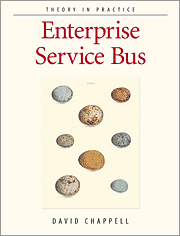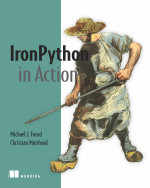Over the last week I have been in Melbourne attending Udi Dahan's Distributed systems course and I thought now that I am home will do a quick review on the course.
Firstly the course is not about how to build a 3 tier system on top of a Microsoft stack. Udi is a well known M$ MVP and has a well known open source .Net project however the course is an architectural course focusing extensively on architectural concerns that are largely technology agnostic. Most of the examples at in C# and use (an abstraction of)MSMQ however I guess near on 100% of the examples could work in Java (assuming tool support). The course is also not about how to build a Thomas Erl style web of web services.
To be honest leave all your preconceived ideas of architecture at home... it will just make life easier.
There were jokes of requiring a support group for attendees of the course, you will feel like Neo after he took the Red Pill; naked alone and very... well humbled.. or stupid, depends how diplomatic you want to be. Because people inherently don't like change there was the typical amount of resistance; given there would have been several hundred years of experience in building large systems in the small room and I would consider these guys some of the best minds in the country in terms of .Net, the red pill was pretty hard to swallow. However like Neo with Morpheus, we put our faith in Udi and let him show us the way.
Seriously though, the course was incredible, I think the overwhelming majority learnt more in those 5 days about designing large scale scalable enterprise architectures than they had over the 5 years of their career.
Just a side note about Udi: he would have to be the most tolerant presenter and teacher I have ever had. These concept were hard to grok all in one go, Udi allowed for lots of questions lots and ensured that the audience knew enough to progress. Sure a lot of the time I was thinking... "what the?" but typically the very next slide answered my question. In terms of raw ability, I have never met anyone like him. Yes he is an outstanding architect, truly outstanding, seriously never met anyone that can walk the walk like Udi in those terms. However to be a truly great architect you have to be a bit more than the guy who is drawing the UML. He has a fantastic mind that has a great understanding of business, organisational management, psychology and his technical understanding is better than all but the absolute best coders. This man is no Ivory Tower Architect. He would be just at home in the largest corporation boardroom having discussions with CTOs as he would pair programming with the guy at the boiler plate writing the code. Possibly a genius.
Request Response is dead... well, its not but... well go on the course, its freaking awesome just be ready to start looking for a support group... you'll need it ;)
**********************
Course outline as it was for our course (from http://www.udidahan.com/training/ on 23 Jan 2010) :
The Rhys Campbell Course Rating: 10/10
Advanced Distributed Systems Design using SOA & DDD
Duration: 5 days
Introduction
Designing large-scale distributed systems is hard. New technologies make it easier to comply with today’s communications and security standards, but don’t auto-magically give you a robust and scalable system. Join Udi for a course packed with the wisdom of companies like SUN, Amazon, and EBay.
Tried-and-true theories and fallacies will be shown, keeping you from making those same costly mistakes today. Communications patterns like publish/subscribe and correlated one-way request/response will be used in conjunction with advanced object-oriented state management practices for long-running workflows. If you enjoy deep architectural discussion, if you are in charge of building a large-scale distributed system, if you want to know more about how the big guys run their systems, this is for you.
Audience
This workshop is targeted at team leads, application and solutions architects, as well as technologists who are involved in making decisions about the overall system design of software products and projects.
Course Topics
Module 1: Distributed Systems Theory
Decades of distributed systems development have taught us many lessons. In this module we’ll cover many historical mistakes as well as proven best practices for scalable and robust design. Topics include:
- 8 fallacies of distributed systems
- Transactions
Module 2: Coupling: Platform, Temporal, & Spatial
Loose coupling has become the watchword of complex systems development, yet few understand its multiple dimensions. In the module we’ll be covering the three different dimensions of coupling as well as patterns for dealing with them.
- Platform Coupling – XML/SOAP
- Temporal Coupling – Synchronous/Asynchronous
- Spatial Coupling – Endpoints/Topics
Module 3: Asynchronous Messaging Patterns
Although scalability is achieved through the use of asynchronous message passing, more advanced message exchange patterns are required to handle today’s complex integration scenarios. This module will cover the most commonly used patterns:
- One way
- Correlated Request/Response
- Publish/Subscribe
Module 4: Bus & Broker Architectural Styles
Enterprise Service Buses are all the rage these days. In this module we’ll be covering what’s the difference between the Bus architectural style, and the more well-known Broker, found commonly in many EAI projects. Topics will include:
- Architectural advantages and disadvantages
- Technological advantages and disadvantages
Module 5: SOA Building Blocks
One of the goals of SOA is to develop systems which are more closely aligned with Business. In this module we’ll be covering an analysis methodology from moving from the business domain to executable systems that comply with all the principles of loose-coupling.
- Business Services
- Business Components
- Autonomous components & Queues
Module 6: Scalability and Flexibility
In order to enable agility, services must be able to scale up, out, and down quickly. In this module we’ll see how autonomous components can be configured including transactional and durable aspects of message handling.
- Configuring autonomous components
- Scaling up and out
Module 7: Long running processes
The distributed communications patterns wouldn’t be complete without a discussion on orchestration. In this module we’ll see how to manage the state of long-running distributed communication flows as well as:
- Encapsulating process logic
- Advantages & disadvantages of orchestration
Module 8: Service / Autonomous Component Solutions
As developers go to implement autonomous components, guidance is required as to which concepts need to implemented in which project, what dependencies are there between projects, and how to bridge the worlds of messaging, business logic, and reporting. Topics include:
- Messages + Handlers
- Databases
Module 9: Service Layer – Domain Model Interaction
Logic-rich services require the use of advanced techniques for logic componentization. The Domain Model Pattern enforces a high level of Separation of Concerns, yet it must eventually be connected with Service Layer code that supports many concurrent users. In this module, the topics covered will include:
- Domain Model introduction
- Testing Domain Models
- Optimistic, Pessimistic, and Realistic Concurrency Models
Module 10: Creating High-Performance Domain Models
The strong separation between the Domain Model and the database which stores and retrieves its data may enable a high level of testability, yet often causes performance problems. In this module, we’ll see the various aspects impacting the performance of persistence:
- Transactions and Isolation Levels
- Lazy Loading, Eager Fetching
- Databases Tips & Tricks
Module 11: Web Services and User Interfaces
The ease of interacting with users over the web drives the need for service to UI interactions. Also, many integrations require exposing synchronous web services to customers. In this module, we’ll see what is required in both cases:
- ASP.NET 2.0 Asynchronous Tasks
- Rich Internet Applications and Services
- Web Services for integration
Module 12: Smart Client / Service Interaction
The publish/subscribe semantics with which services communicate require smart clients to perform a great deal of background work. Also, certain service contracts lead to more performant clients. In this module, we’ll cover the first part of these interactions:
- Multi-threaded client challenges
- Client-friendly Service Contracts
- Service Agents and Client Repositories
Module 13: Notifications & Smart Clients
After Message Handlers in the Service Layer create or update the relevant Model objects in the client Repository, Supervising Controllers are in charge of getting Views to show the updated data. In this module, we’ll describe the parts and interactions of these flows:
- Client-side Model Objects
- Supervising Controllers
- Views and their Interfaces
Module 14: Commands & Smart Clients
Capturing user intent and synchronization between views are at the core of smart clients. After describing solutions that use Events on the View Interfaces, the Command Pattern will be introduced to further decrease coupling between Supervising Controllers. In this module, we’ll describe the parts and interactions of these flows:
- View Interfaces, and how Entity Cloning affects them
- Supervising Controllers and clone reconciliation
- Commands, and Event-Based programming
Summary & Review
In order to make sure that attendees are able to put into practice all that they’ve learned throughout the course, here we strengthen the seams between the various topics. Q&A is also a core part of this final section.




